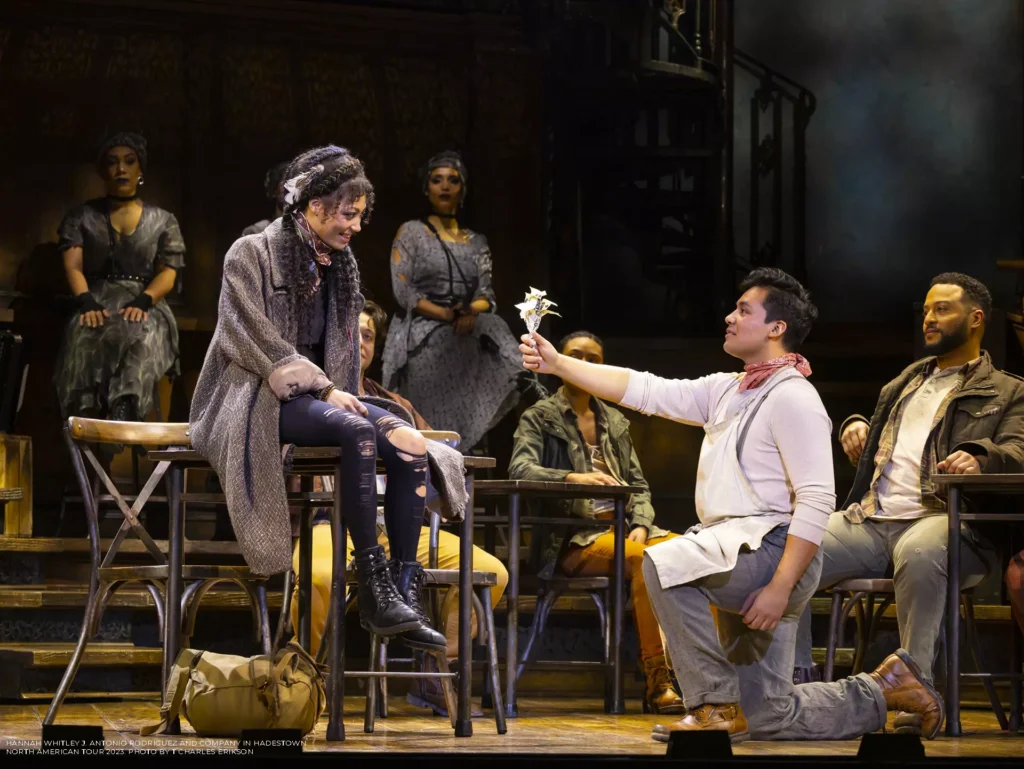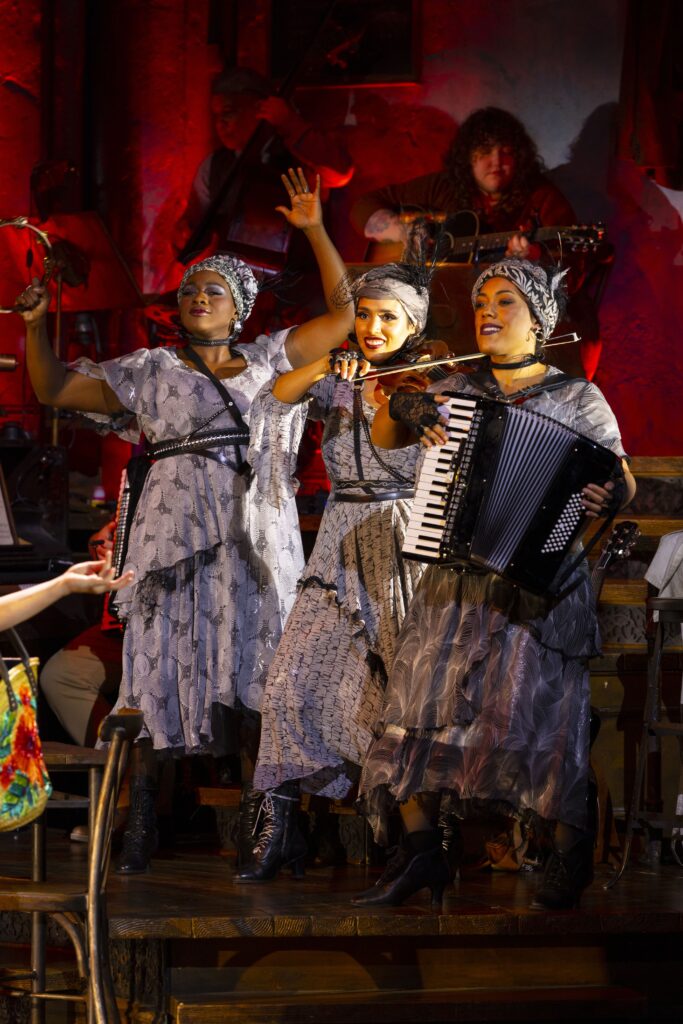We stand upon the brink of a precipice. We peer into the abyss—we grow sick and dizzy. Our first impulse is to shrink away from the danger. Unaccountably we remain… (Edgar Allan Poe “The Imp of the Perverse”)

by Jeff Grygny
In 1988, a young director named Tim Burton made a fabulously inventive movie that flipped the haunted house story inside out: it was about two hapless ghosts trying to exorcise the awful people who moved into their beloved home. Quirky and weird-cute, with a no-brakes calliope score by Danny Elfman, it was well-received by critics and public alike. Now, 30 years later, so their own mysterious reasons, desperate producers have decided to bank on the film’s warm memories, and so we have a both big-screen sequel (unimaginatively titled Beetlejuice Beetlejuice), and a stage musical adaptation. The latter, winning good reviews on Broadway, has arrived in Milwaukee in a touring version, with high-tech polish and a talented cast of professional singer/dancer/actors eager to show the hinterlands what exactly it was that made Lauren Boebert so hot and bothered that she effectively crashed her career as a right-wing attack troll. So now the question before us isn’t really “Is it good?” but rather “Why? What is it actually for?”
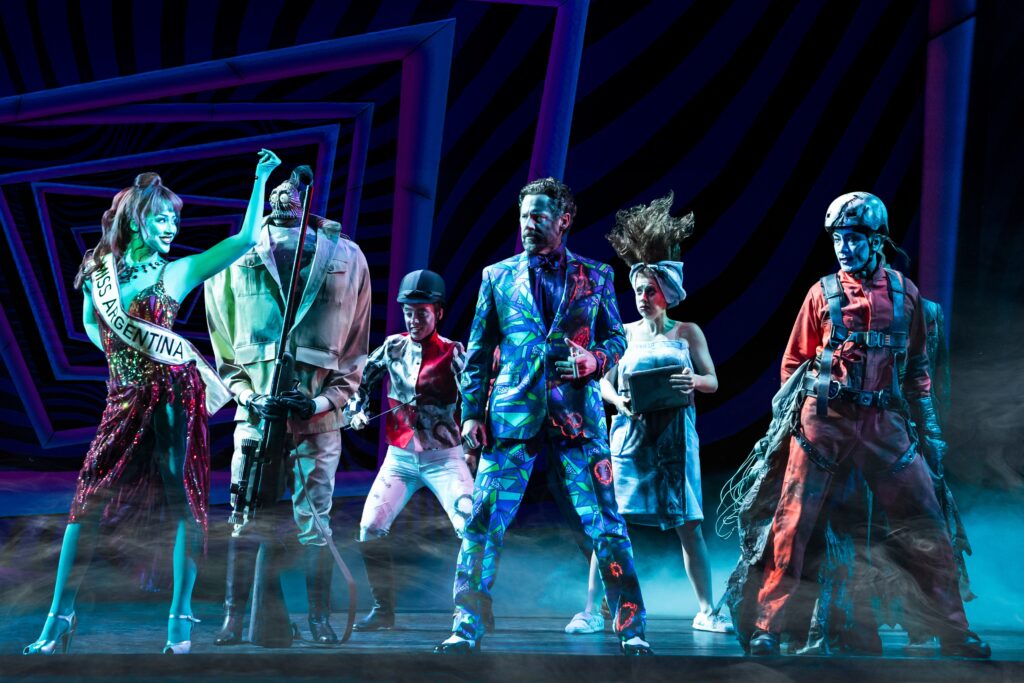
Once you get over the show’s inevitable reek of corporate spreadsheets, it’s pretty darn fun: a prime specimen of Industrial Entertainment Product™, with all the glitz and dazzle, design and music that call back to the movie, and a bushel of witty, hard-to-follow songs that all end with a big, applause-demanding finish. In the role of the eponymous antihero, Justin Collette dominates the stage, with the comic voice and quick attitude changes of a cadaverous Robin Williams. “I say this bullshit like eight times a week,” he quips early in the show: a Deadpool-like smirk to the audience characteristic of much of today’s Industrial Entertainment Product™.
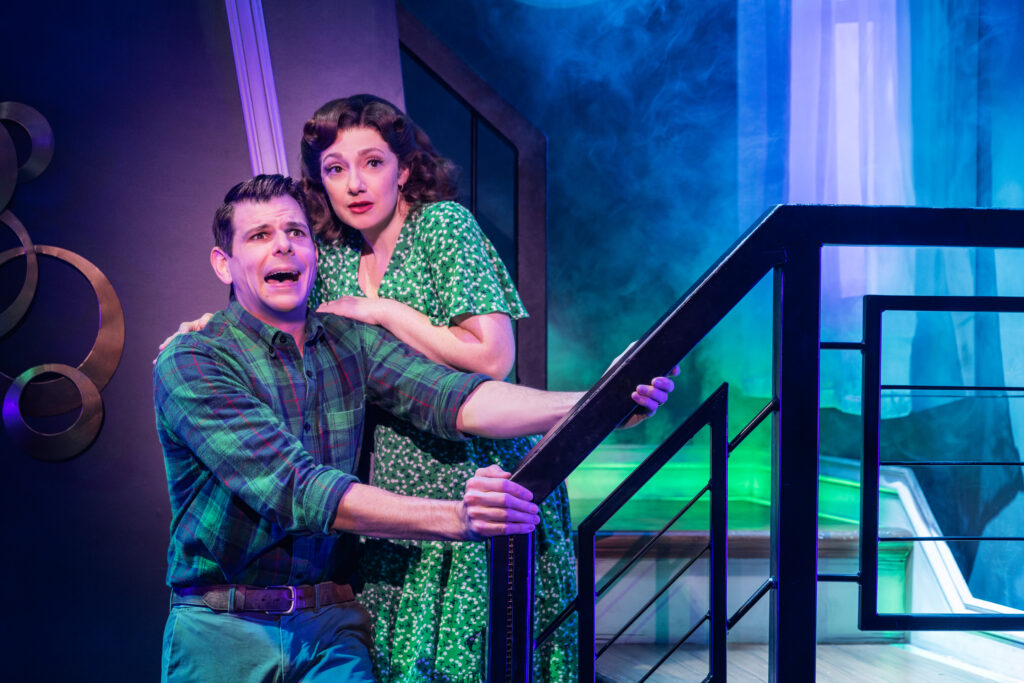
There’s not a bad performance, and some of them really shine: Will Burton, as the erstwhile yuppie ghost, brings a gangly, goofy “Brad” energy that nearly steals the show. Nevada Riley, as the goth girl™ Lydia, struggles a bit making the heavy-load-bearing lyrics understandable, but she does a lot of the show’s emotional labor, with angsty ballads and soaring aspirational solos. In a dramatis personae of basically horrible people, Sarah Litsinger is surprisingly sympathetic as the new age bimbo Lydia’s father hires to break her out of her shell of gloom, while, in her supporting roles, Maria Sylvia Norris memorably turns her cartoonish intensity up to 11. And, like the Lady of the Lake in Spamalot, Hillary Porter as Miss Argentina, makes the most of her completely gratuitous number.
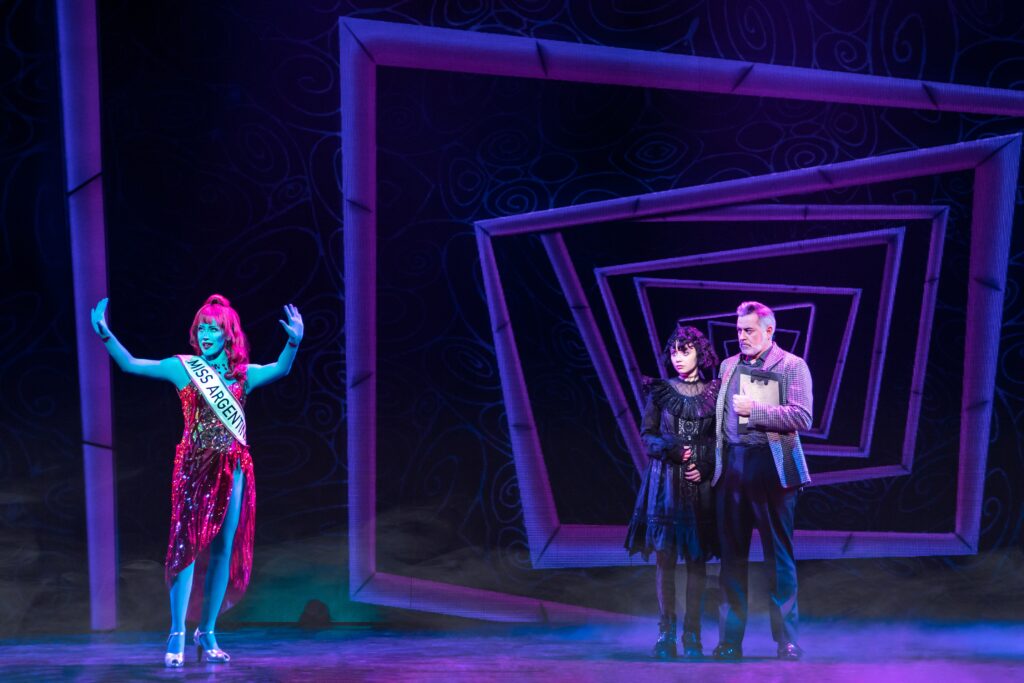
The set and puppet designs by David Korins and Michael Curry are stylishly macabre: shrunken-head guy makes a cameo appearance in a dance number, there’s a fun skeleton chorus, a monster soul-eating snake, and an amusing chase through the Netherworld. Connor Gallegher’s choreography is bog-standard, but diverting and well-executed. Peter Nigrini’s projection designs are classy, effective, and don’t look like they were made by AI: a strong plus. And the eight-piece band was effortlessly kicking it. So the show is fine escapist fun. But is it about anything besides it’s balance sheet? Why Beetlejuice? Let’s take a deep dive, shall we?
The name “Beetlejuice” is a clever take-off on the name of an actual celestial star: Betelgeuse, from the Arabic name “Hand of Orion,” (it’s in that constellation). It got its first letter “B” from a medieval copying error, (without which we’d have had to call the show “Veetlejuice,” which is not nearly as catchy)! And from ancient times it’s been known for it’s fluctuating brightness (it virtually vanished from the sky a few years ago, but it’s mostly back—for now.) So, randomness and chaos are baked right into the name. “Beetlejuice” is also just a marvelous name for a demon; it’s a fusion of ugly sounds and images, like the devils’ names in C.S. Lewis’ famous Screwtape Letters, and it calls back to the biblical demon Beelzebub—itself an insulting term for the ancient pagan deity Baal. None of this seems especially relevant—or does it?
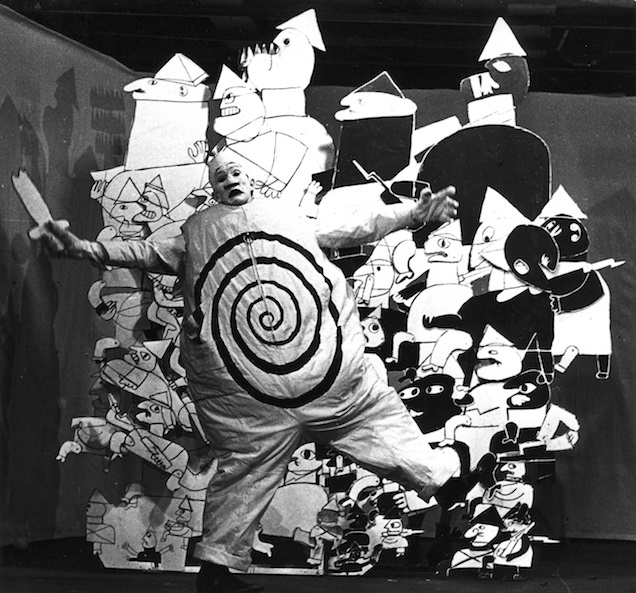
The character of Beetlejuice is a variation of a very old mythological trope: the Trickster. Usually troublesome and rather stupid, self-centered, unscrupulous, and almost always male, the Trickster makes trouble for ordinary folks. With his coarse appetites, foul mouth, and even his black-and-white outfit, Beetlejuice is arguably an update of Pere Ubu, a Trickster who appeared in the very first avant-garde play: Ubu the King by Alfred Jarry, an absurdist takeoff of Shakespeare’s plays. Pere Ubu is a gross, insatiable creature with an enormous belly who becomes king by violence and lies, and proceeds to ruin the land until he’s finally overthrown and exiled. Now, can anyone here relate to the problem of a disgusting chaos goblin who invades our lives and refuses to go away? I admit this this is taking the long way around. But even corporate art can sometimes echo the dreams and nightmares of our culture. And I’m not saying that the resurgence of Beetlejuice is playing out the unbearable tension of a criminal rising to political prominence. I’m not saying it isn’t, either. Ultimately, the show exists because some talented artists were moved to create it.
Scott Brown and Anthony King, who co-wrote the show, had previously written a somewhat successful show called Gutenberg! The Musical, about two guys who are trying to sell their idea for a musical about, you know, the book guy, playing the roles themselves. Eddie Perfect, who wrote the songs, is a performer who’s written a lot of political and cultural satire in his native Australia. These are very successful artists who are steeped in both the art and the business of musicals. Now, just suppose that there’s something about Beetlejuice that strikes a cord in this MAGA moment of American culture. It could be a big hit—but to get the investors to write checks, it would have to appeal to both sides. An antihero who’s gross and abrasive, but also funny and winks at the audience, wouldn’t alienate anyone, would it? The inappropriate humor, the cynicism, the unruly masculinity (which the dialog consistently lampshades, by the way): all of a piece with our cultural moment. The show both lampoons and celebrates the whole toxic mess, and wraps it up in a nice family reconciliation.
Either that, or it’s just a fun show that capitalizes on the richness and creativity of a marketable intellectual property. Step right up, folks!
Beetlejuice
Music and Lyrics by Eddie Perfect
Book by Scott Brown and Anthony King
Based on the Geffen Company Picture
Playing through October 6
Uihlein Hall
Marcus Performing Arts Center

